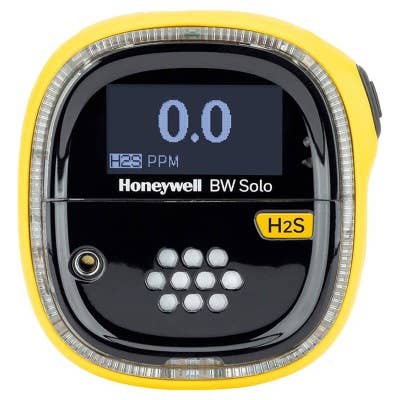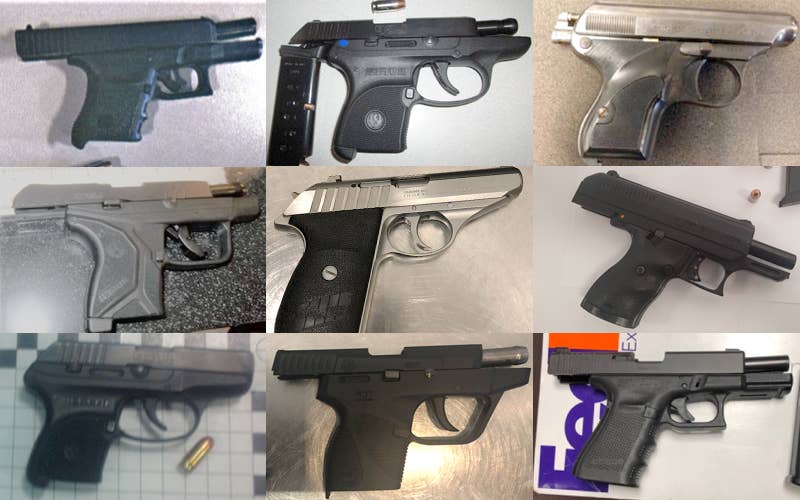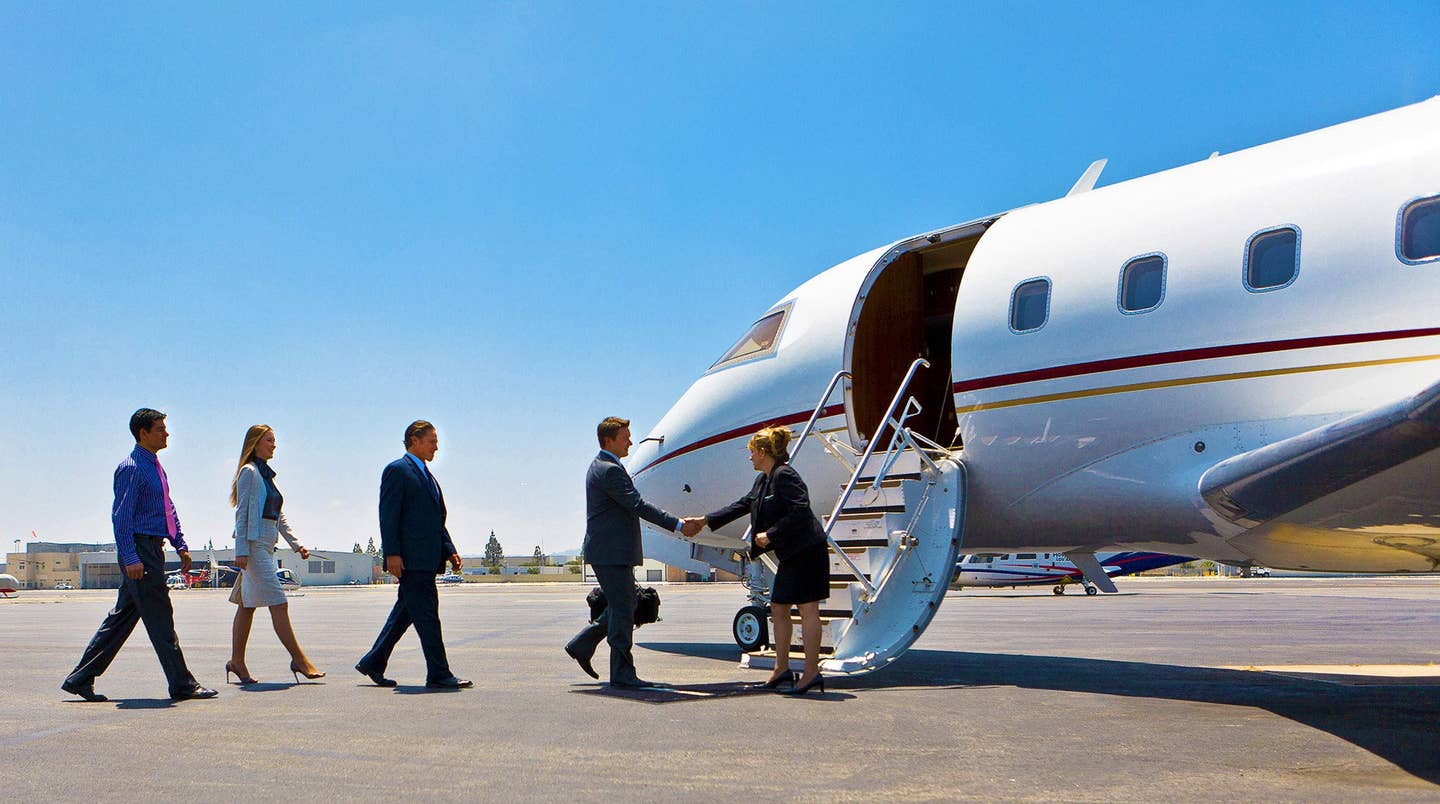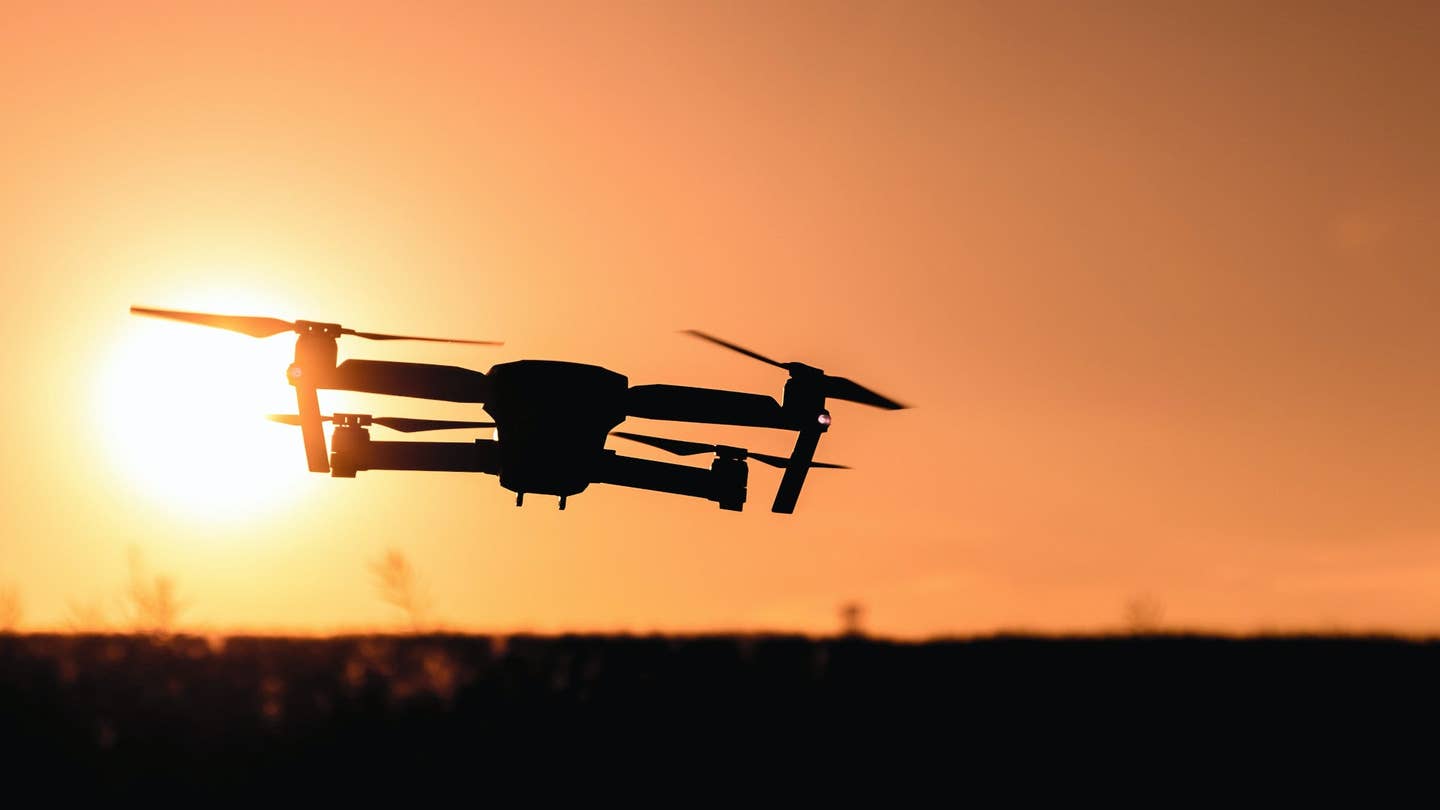
Carbon Monoxide is naturally occurring, but in tight quarters like an aircraft it can be deadly. [Credit: Aircraftspruce]
Editor’s note: The following article is not intended to be a ranking, but is only to serve as a list of possible options. As the saying goes, your mileage may vary.
Carbon monoxide is a stealthy danger for pilots and passengers. The odorless, colorless, and tasteless gas can cause incapacitation or even death if inhaled for long periods of time. The gas is primarily caused by exhaust system failures. To be proactive, and to be notified if carbon monoxide is present in the cabin of your aircraft, a carbon monoxide detector is recommended in all aircraft cabins.
Quicklook: Aviation Carbon Monoxide Detectors
- Best For Low-Level Portable Solution: CO Experts ULTRA
- Best For Mid-Priced Portable Solution: Forensics Carbon Monoxide Detector
- Best Affordable Solution: Sporty’s Pilot Shop Carbon Monoxide Detector
- Best For Phone Connectivity: Aithre Shield Carbon Monoxide Detector
- Best For Cockpit Mounting: Guardian Avionics Carbon Monoxide Detector- AERO-553
- Best For Zero Maintenance: GasAlert Clip Extreme II
6 Carbon Monoxide Detectors for Aviation
There are many carbon monoxide detectors to choose from, and none are the wrong choice, but here are our picks for the best carbon monoxide detectors to keep in your cockpit. Carbon monoxide detectors can come in many variations from simple stick on one-time-use paper sensors to fully installed avionics systems. Carbon monoxide detectors can be an essential component of any flight bag and cockpit.
CO Experts ULTRA
Best For: Low-level portable solution
CO Experts have been producing CO detectors for years. The low level CO detector is a portable monitor that detects CO as low as 1 PPM (Parts Per Million, the amount of CO in the air) and will alert at 7 PPM.
Dimensions: 6”x 3.75” x 1.75”
Weight: 10 ounces
Ease of Use: Once powered on, The CO Experts ULTRA will begin detecting possible CO. The alarm can be tested/hushed/reset by the push of a button. No setup necessary.
Sensor Life: Average sensor life is about 5 years
Low-Level Alarm: Can detect CO levels as low as 1 PPM
CO Levels: 1 PPM - 50 and greater PPM
Digital Readings: Yes
Customizable Alarms: No
Battery: 2 AA batteries—detector notifies when the battery is low by displaying ‘BAT’ on the screen.
Special Features: The CO Experts ULTRA is one of the lowest reading CO Detectors on the market.
- Two-year Manufacturers Warranty
- Reads as low as 1 PPM to provide pilots adequate time for decision making and emergency procedures if needed.
- Constant alarm can be hushed.
Benefits:
- Memory function to show when the sensor detected its highest and lower CO levels
- No calibration Required
- Largest-volume, longest-life, electrochemical sensor on the market
- Small and Portable
Disadvantages:
- It’s not recommended to leave the sensor in the aircraft when not in use.
- Cannot be stored outdoors
Pricing: $209
Forensics Carbon Monoxide Detector
Best For: Mid-priced portable solution
The Forensics Carbon Monoxide Detector starts detecting at 9 PPM. It has a small aluminum portable body for use in and out of the aircraft. It’s also one of the lightest digital detectors on the market.
Dimensions: 2.5”x1.75”x.65”
Weight: 2 ounces
Ease of Use: No configuration is required and turns on with the touch of a button.
Sensor Life: 3 Years
Low-Level Alarm: Lowest level alarm at 9 PPM
CO Levels: Reads levels from 9 PPM to 1000 PPM
Digital Readings: Yes
Customizable Alarms: No
Battery: The detector comes with two CR2032 batteries and the battery life is about 1 year.
Special Features:
- Two alarms equipped to sounds at 70 dB, making sure to be heard in the cockpit
Benefits:
- Alarm will sound from 60-240 minutes based on battery life.
- Travel sized and can be kept in the aircraft at all times
Disadvantages:
- No values less than 9 PPM will be detected, shortening available response time for pilots.
- Alarm can only be turned off if the CO detector is turned off.
Price: $99
Sporty’s Pilot Shop Carbon Monoxide Detector
Best For: Pilots looking for a reliable affordable solution.
The Sporty’s Pilot Shop Carbon Monoxide Detector is a low-cost, non-digital carbon monoxide detector. This type of detector is often used by flight schools for reliability and being cost efficient. Perfect for a flight bag.
Dimensions: 2 ⅛” x 2 ⅛”
Weight: 1 ounce
Ease of Use: Open the package and stick it to any surface in the aircraft cockpit.
Sensor Life: 90 days opened and 3 years unopened
Low-Level Alarm: None
CO Levels: Turns black when CO levels indicate sufficient concentration to cause sickness, headaches, or death
Digital Readings: No
Customizable Alarms: No
Battery: No Batteries
Benefits:
- Low price
- Recommended by the FAA
- Easy to use
Disadvantages:
- No low level detection
- No digital readings
- Must replace every 90 days.
Pricing: $4.95
Aithre Shield Carbon Monoxide Detector
Best For: Pilots looking for a detector that connects to their phone for ease of use.
The Aithre Shield 4.0 detector has its own iOS app and allows users to connect to view PPM history from the previous four hours. The app is easy to use and easy to set up, and the detector has a rechargeable battery. It has one of the longest lifespans on the market and is a similar platform to an app-enabled ads-b.
Dimensions: 2 inches tall
Weight: 1 ounce
Ease of Use: Auto pairs to the user's iPhone, with app-guided setup.
Sensor Life: 10 years
Low-Level Alarm: Yes, the user can set the low-level alarm.
CO Levels: 0-255 PPM
Digital Readings: Yes, on iPhone
Customizable Alarms: Yes
Battery: Rechargeable battery
Special Features: Customizable to the user
- Connect to an iPhone, can set up Siri notifications
- Fully customizable alarms from 1-255 PPM
- 10-year sensor life
Benefits:
- Rechargeable
- Hand-calibrated with certification
- Mounting clips
Disadvantages:
- Errors in the sensor between -10 C to +50 C
- Not Android compatible
Pricing: $150
Guardian Avionics Carbon Monoxide Detector- AERO-553
Best For: Pilots looking for an avionics-mounted carbon monoxide detector specific for cockpits.
This carbon monoxide panel is installed directly into the cockpit panel. It is designed to fit in place of a standard instrument panel clock. It carries more functions than a typical aviation carbon monoxide detector and has an easy-to-read display.
Dimensions: 2.25 in. W x 2.25 in. H x 2.5 in. D
Weight: 7.5 ounces
Ease of Use: This carbon monoxide detector must be installed by an airframe mechanic to be FAA certified. Once installed, the carbon monoxide detector also acts as a clock, temperature gauge, cabin and density altitude sensor, and a carbon monoxide detector. Everything is shown on an easy-to-read LCD display.
Sensor Life: Seven years, but after that, the carbon monoxide sensors can be recalibrated through Guardian directly.
Low-Level Alarm: No low level alarm. First carbon monoxide alarm will sound when the level of CO reaches 50 PPM or more.
CO Levels: 30 PPM to 999 PPM
Digital Readings: Yes
Customizable Alarms: No
Battery: This carbon monoxide sensor is wired into the cockpit so the battery will run off the aircraft's power. Input power 9-30 VDC - Power usage is less than 2 watts
Special Features:
- Hard-wired into the aircraft
- Additional features, including a temperature gauge, density altitude sensors, and clock
- Internal fan for optimum sensing
Benefits:
- Battery will never die
- Audible alarm with a varying pitch at 85 dB
Disadvantages:
- Price
- Must be installed by an A&P mechanic
Pricing: $885
GasAlert Clip Extreme II
Best For: Pilots looking for a zero-maintenance carbon monoxide detector.
This is the most widely used digital carbon monoxide detector in all industries. The sensor requires no calibration, is portable, and has a long battery life. The ease of use combined with the cost-effectiveness makes this CO detector a great choice for pilots who want to set it and forget it.
Dimensions: 1.1 x 2.0 x 3.2 in. / 28 x 50 x 81 mm
Weight: 2.7 ounces
Ease of Use:
- No sensor or battery change needed
- Powered up with the push of a button
- No calibration is needed by the user
Sensor Life: 2 years
Low-Level Alarm: No, the lowest level this carbon monoxide sensor can detect is 30 PPM
CO Levels: 30 PPM to 200 PPM
Digital Readings: Yes
Customizable Alarms: No
Battery: Battery comes installed and cannot be changed. Once the battery dies, the carbon monoxide sensor needs to be replaced.
Special Features:
- Maintenance-free, the battery is installed and the calibration is complete upon purchase
- Built-in, concussion-proof boot
- Highly water-resistant design
Benefits:
- Two alarm levels (low/high)
- Full-function self-test of audible/visual alarms
- Can show log events of 10 past readings
Disadvantages:
- Battery and sensor life is short for a digital CO detector, 2 years
- Lowest detectable level is 30 PPM
- Can not replace battery
Pricing: $160
What Is a Carbon Monoxide Detector?
A carbon monoxide detector is a sensor that can detect the colorless, tasteless, and odorless gas known as carbon monoxide (CO). A CO detector is commonly used in industries where carbon monoxide can leak from equipment without notice.
How Do Carbon Monoxide Detectors Work?
Carbon monoxide detectors consist of a small metal oxide semiconductor sensor that uses circuits applied to a silica chip. When CO comes into contact with the circuitry, it lowers the electrical resistance. The CO can be measured based on the parts per million present in the air. If the PPM is high enough, an alarm will sound to notify the user.
What causes carbon monoxide in airplanes?
Carbon monoxide (CO) is a byproduct of the combustion of fuel and is emitted in the exhaust of gasoline, propane, or other fuel-powered equipment and engines. In aircraft, carbon monoxide can leak from a few places. The most common carbon monoxide sources in an aircraft are:
- Internal combustion engines (piston aircraft)
- Turbine engine exhaust (turbine aircraft)
- Auxiliary Power Unit (APU) exhaust
- In aircraft that rely on air warmed over the engine manifold in flight for cabin heat, carbon monoxide can be drawn into the cabin if there is a crack in the manifold or duct work.
What Makes a Reliable Aircraft Carbon Monoxide Detector?
A reliable carbon monoxide detector will be able to detect carbon monoxide at levels that will advise of a leak of CO before impairment is present. These levels are between 20-40 PPM. At 50 PPM impairment will start to take effect on a pilot. This impairment can lead to loss of control of the aircraft, incapacitation, and even death.
Size
The average size of a carbon monoxide detector is around 2.0”x2.0”x1.0”. This will vary based on the type of carbon monoxide detector used.
Battery
The type of batteries a carbon monoxide detector uses varies based on the type of sensor chosen, portable, app-enabled, stick on, or installed. Most carbon monoxide detectors are portable and require batteries that are changeable such as AA or CR2032. Some carbon monoxide detectors have batteries that can be charged and others do not have any batteries at all.
Digital Readings
Digital readouts on portable, app-enabled, and installed carbon monoxide detectors are shown on an LCD or phone screen by PPM. The PPM readout will vary depending on the range the sensor can detect.
Early Warning Protocol
Early warnings, especially between 20-40 PPM are essential to pilots to ensure adequate time to invoke emergency protocols to stop the CO emission, to reduce gas in the cockpit, or land safely before the gas saturation is high enough to impair the pilot.
Accuracy
The FAA certifies carbon monoxide detectors for accuracy to ensure the least amount of false alarms. Accuracy refers to the detection limits and how close the measured value is relative to the true CO level. The detectors will go through a certification test to compare the reading shown with the actual reading of the air benign presented. This is to ensure pilots are equipped with the information needed to plan and execute emergency procedures related to CO exposure and how urgent the response needs to be.
Sensor Life
Over time, the components in the interior of carbon monoxide detectors degrade. This degradation time varies depending on the carbon monoxide detector being used. Some sensors degrade in three months while other detectors can last as long as 10 years.
Atmospheric Pressure Influences
The partial pressure of a gas is affected by the atmospheric pressure, specifically density altitude. That is due to the dispersion of air particles expanding as the altitude increases. In unpressurized aircraft, the pressure difference will not have an effect, but in piston- non-pressurized aircraft, it will be affected. At high altitudes, air pressure decreases, but the concentration does not change. Therefore if the sensor reads 70 PPM, the decrease in altitude will not change the saturation of CO in the cabin.
End-of-Life Documentation
Carbon monoxide detectors do expire. The expiration date is important to keep track of because the calibration of the sensor, normally conducted by the manufacturer, does skew over time. In some instances, carbon monoxide detectors can be recalibrated, but in most cases, the carbon monoxide detector will need to be replaced once it expires to ensure the accuracy of the sensor.
Price
Prices for carbon monoxide detectors vary. The price of the sensor is not a measure of how effective the sensor is. Sensors range in price from $3 to more than $1,000 for avionic installed models.
Protect Yourself and Your Passengers
Carbon monoxide (CO) is a colorless, tasteless, and odorless gas that can be a danger to both pilots and passengers. Carbon monoxide detectors are an essential component to every cockpit. CO detectors come in many different platforms from app-enabled sensors to fully installed avionic equipment. There are hundreds of different carbon monoxide detectors on the market, this list is to equip a pilot with the necessary information needed to make an informed decision on which CO detector they should invest in.
FAQ
Do Airplanes Have Carbon Monoxide Detectors?
Most aircraft owners do opt to have a carbon monoxide detector in the cockpit, but it is not required.
Why Is Carbon Monoxide Poisoning a Concern in Aircraft?
Carbon monoxide exposure can cause impairments such as dizziness, fatigue, incapacitation, and even death.
How Do I Choose a Carbon Monoxide Detector?
Choose a detector based on your budget and aircraft use.

Subscribe to Our Newsletter
Get the latest FLYING stories delivered directly to your inbox






